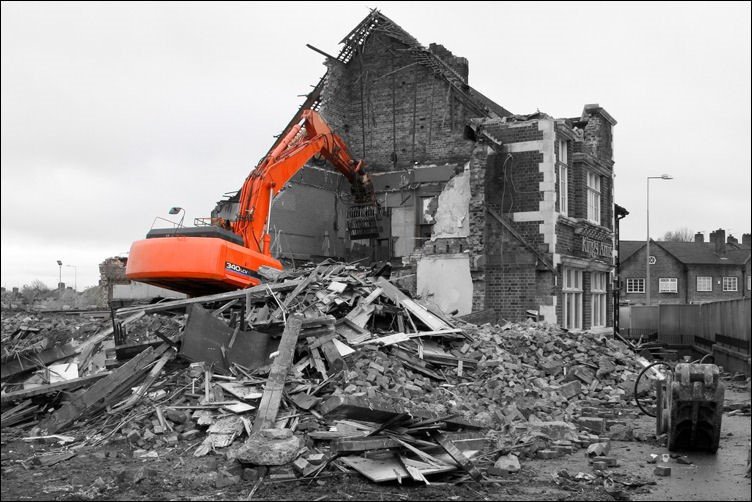
The demolition industry continues to make way for growth, revitalization and renovation worldwide. Although demolition is an important part of city life and our environment, most people do not know much about what demolition involves. A good place to start is with some of the terminology involved with the demolition process.
A Glossary of Demolition Terms
The process of demolition – practices that make up the demolition, deconstruction, recycling, salvage, transfer or disposal of buildings, structures and their components. The process is how a structure is removed, taken down or apart in readiness for the site being redeveloped.
Technology – this relates to advanced equipment that is applied to maintain, secure and keep safe the workers as well as protecting the immediate environment. Demolition technology includes a number of special excavators, cranes, loaders backhoes, as well as many extra pieces of machinery such as crushers, sheers, hammers, wrecking balls and pulverisers and the like. It also covers the personal protective equipment worn by operators such as breathing protection, filtration units, air monitors, water filtration systems, waste treatment and recycling equipment, and a variety of storage and disposal technology.
Structural demolition – the act of demolishing buildings or structures into the most basic materials or parts. For Birmingham Demolition, visit a site like https://www.hammerjack.co.uk/
Deconstruction – the act of demolishing buildings or structures with the goal of generating the maximum amount of recycled materials. Deconstruction is labour-intensive and usually requires a large amount of manual demolition.
Explosives – explosives are sometimes used when it is safe to do so to commence the start of the gravitational collapse of a structure. Explosions, however, only make up less than 1% of all demolition.
Rigging – special duty lines, pulleys, chains and heavy equipment used for relocation, moving, or salvaging of structures or their components.
C & D Recycling – this involves dealing with waste from construction and debris from demolition and that act of saving, salvaging and reusing materials from demolished structures. Modern demolition professionals will normally salvage over 90% of the building.
Industry Recovery – the rescuing, salvaging and reusing of the industrial component of plants, factories, and manufacturing facilities. Demolition professionals identify valuable materials on the project site and market them to end users and salvage companies.
Safe Work Practice – safe guidelines are followed by modern demolition professionals who protect the most important resources through being a professional workforce of highly trained and skilled individuals. Safe Work Practice includes health & safety work regulations, technical recommendations, training guidance, limit exposure to potentially harmful substances, and environmental protocols to protect the public and the environment.


